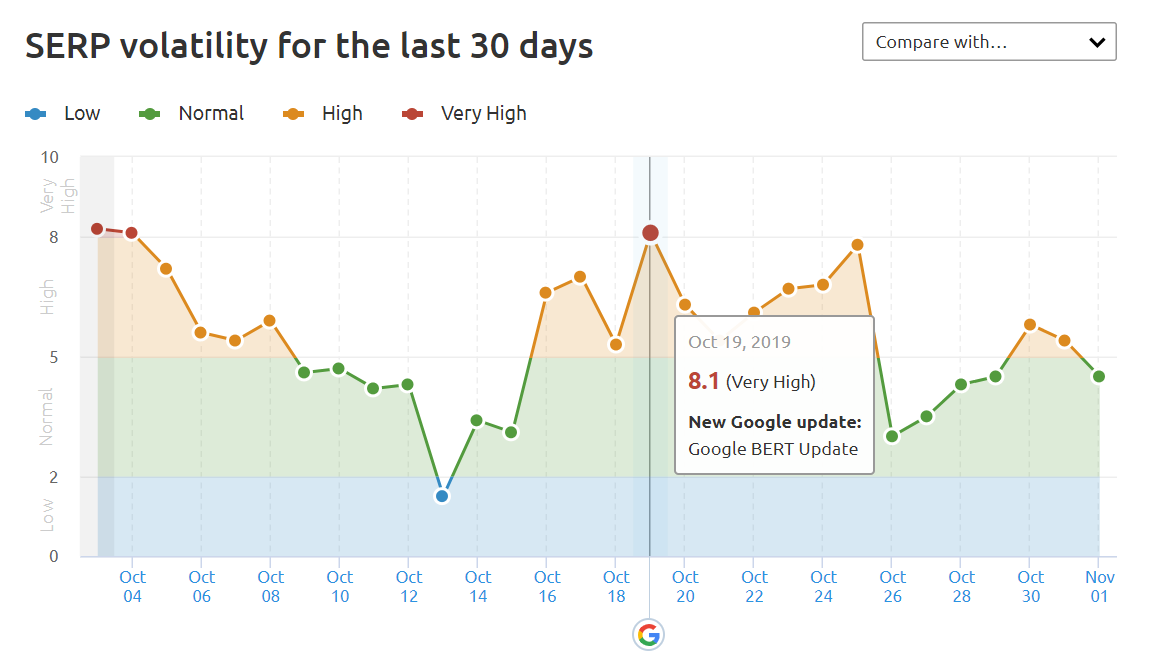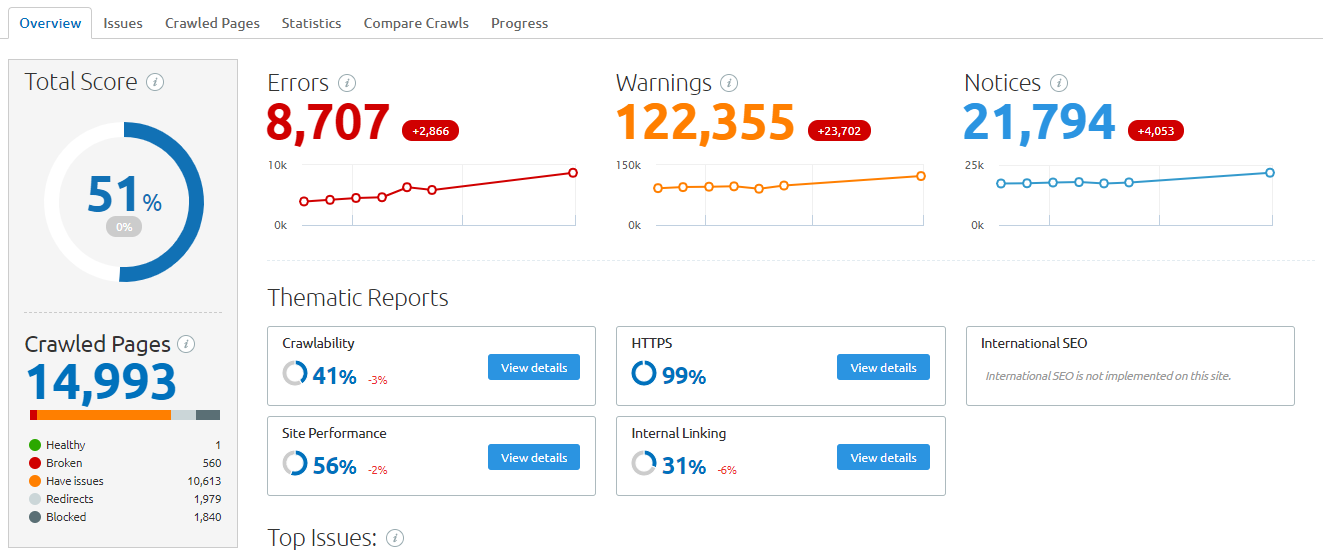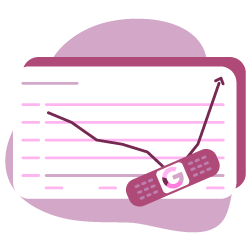Where would your business be without Google? In an age where the path to discovery often passes directly through the Google platform, any form of a Google penalty could be disastrous. If you have been hit with a Google penalty – or you want to know what to do if you’re on the receiving end of a Google penalty in future – then this article is for you.
What is a Google Penalty?
A Google penalty is where your website is impacted negatively when it comes to Google’s search rankings, based on an action by Google itself. We’ll look at some of the reasons behind a Google penalty in a bit, but you’ll know if you’ve been penalized because your rankings will drop. You’ll start seeing less traffic from Google search results, and your analytics graphs will go into freefall. In some cases, there will also be communication from Google directly, informing you of the Google penalty.

Is it really a penalty or just an algorithm fluctuation?
There is a big difference between a Google Penalty and an algorithm fluctuation. Google periodically updates its algorithm – Google Panda and Google Penguin are better-known examples – and indeed Google is constantly updating and improving the way its search algorithm works.
What this means practically is that search results are dynamic and that as improved algorithms come into effect, your results may very well be impacted. Where the impact is positive, this is of course great news. Where the impact is negative however, the implications are very real and have to be dealt with as soon as possible.

Why have you been penalized?
Your rankings suddenly drop. Traffic dried up. What do you do? The first step to take is to figure out why you have been penalized, and what type of penalty or change has occurred.
Manual Penalty in Search Console
A manual penalty can cause the biggest shock but is also the easiest to remedy. Typically a manual Google penalty is leveled where a black hat SEO technique or other anomaly is detected by Google. You will get a warning in your Google Search Console, with text such as “Issue detected: pages affected by manual actions can see reduced display features, lower-ranking, or even removal from Google search results”. Detail can be given, such as “Pages from this site appear to contain spammy user-generated content”.
In these cases, Google actually gives you an opportunity to fix the error, by presenting a big “Done fixing? Request Review” button. So in these cases, you can tweak the offending content, get on the right side of Google, and be reviewed again.
Algorithm penalty
Algorithm “penalties” on the other hand can be more difficult to fix. There will be no specific action to take, and no way to find out why the algorithm has changed your ranking. In this case, a site audit is recommended, along with a thorough review of data in your Search Console and your SEO basics.
What follows are some key actions to take, no matter if your search engine results were impacted by an algorithm update or a manual warning.
Key Actions
1. Check and remove bad backlinks
We all know the power that backlinks have on your ranking. This is a critical first point of call when it comes to getting back to where you were ranking originally, and even improving this further. Link-related penalties are probably the most common penalty received by websites.
Typically, this occurs where there is unnatural linking going on, which Google picks up pretty easily. It’s often caused by participating in link schemes or outright buying links to increase traffic/ranking.
While this is really not a great idea in general, if you have done this in the past it can be easily fixed. Review all suspicious links, remove or add “no follow” attributes to offending URLs, and you’re already in a much better position. But what about links pointing to your site? Happily, Google allows you to disavow such links. Generate a list of these URLs and submit them to Google at their Disavow Links Tool Page.
2. Remove duplicate content
Another common offender is duplicate content. Google takes a harsh view against such content, which can even affect people who have inadvertently used other websites for inspiration. Your first step should be to familiarize yourself with what Google sees as duplicate content, which you can do through the Search Console. Next, review your site for any potential duplicate content, including poor guest posts, auto-generated content or “filler” content. There is even software available to detect duplicate content on your domain. Remove this content and get your site reviewed as soon as you can.
3. Check your website for malware
Unfortunately, malicious actors inject malware into innocent websites, and it’s something that always has to be guarded against. A common trick used is to take over pages of a Wordpress website and benefit from the legitimacy of the site to trick others into sharing credentials or downloading malicious files.
If this is suspected, immediately contact your hosting provider, who generally will have dealt with this problem before and will assist in solving it. Contact experts who can help identify and remove the malware, and consider quarantining your site.

4. Make sure nobody used blackhat techniques
Site owners will often engage third party “SEO experts” who promise quick results. When it comes to building a solid, long-term SEO strategy, however, there is no substitute for engaging experts who are able to create tremendous SEO value while avoiding illegal techniques.
Blackhat SEO techniques include keyword stuffing and invisible text, and while they may boost results in the short term, they can completely destroy websites and businesses in the medium and long-term.
When in doubt, either review your SEO efforts yourself or if you are not technically proficient in this area, engage a reputable SEO expert to do it. Any blackhat related warning from Google is a massive warning sign that blackhat techniques have been used on your website.
5. Audit the website and improve it
Just like going for medical checks regularly is the best way to stay healthy, auditing and improving your website is the best way to ensure the best possible SEO results while avoiding any Google penalties.
A mobile marketing agency can help you with an in-depth audit for your website.

- Metadata
Ensure metadata, including keywords and descriptions, are optimized, accurate, and Google-friendly. Having metadata that’s outdated or irrelevant is a sure-fire way of dragging down search results. - Quality Content
There’s no substitute for quality, helpful content. This is what Google is constantly striving towards and is the best way to ensure you end up on the right side of any future algorithm changes. - Page Speeds
Google attaches a lot of weight to page loading speeds, so ensure you’re optimized in this regard. This also includes mobile. Google has its own tools to check page loading speeds, and where to optimize. - SSL
Having certification immediately adds gravitas and seriousness to your site, and impacts your search results. Ensure you have an SSL certificate for maximum SEO effectiveness. - Optimized images
This includes using images that are unique, not too big in terms of file size, are captioned well and whose metadata helps, rather than hinders, SEO results.
6. Wait
Our final piece of advice is to wait. Website owners can quickly panic when they see a Google penalty and throw money at ineffective strategies to try and remedy the situation.
Of course, a Google penalty can have a massive impact on your business, and you want everything to be “back to normal” as soon as possible. But remember that even after you repair everything, you still need to wait a few months to recover. Website owners should be aware of this and not panic. If you follow a good SEO strategy from the outset, you will have nothing to worry about.

